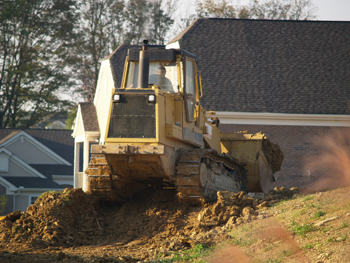Strategy of the Month: Building Public Support for Affordable HousingDecember 2009 Despite the recent downturn in the housing market, affordable housing remains a pressing need in many communities. A common barrier to the development of housing affordable to low- and moderate-income families is the prevalence of the “Not In My Backyard” or NIMBY sentiment, which at times can take the form of vocal opposition on the part of community residents. Negative perceptions of low-income housing, fear of higher densities, overcrowding, and increased traffic and congestion — either singly or in combination — often form the underpinnings of community opposition to affordable housing projects. A report produced by the Institute of Local Government, Building Public Support for Affordable Housing: A Toolbox for California Officials, outlines strategies that local officials can adopt to help overcome NIMBYism and to promote affordable housing development. These strategies are applicable in communities throughout the nation.
Once all of the major stakeholders (i.e., project developers, neighbors, and housing advocates) have been identified, local officials must accept the validity of some of the issues raised — neighborhood character, environmental quality, traffic, and security are all listed in the report as valid community concerns that need to be addressed. To effectively engage community members and alleviate their concerns, the report recommends using goal-setting exercises, charettes, and design workshops to improve stakeholders’ understanding of a proposed affordable housing project. Other strategies to promote public participation involve gathering community input through surveys and polls, using exhibits and displays in public areas for information dissemination, and communicating through the web and local media. Additionally, the report discusses ideas for increasing the effectiveness of public hearings to "build support for affordable housing". To view the report in its entirety, please visit https://www.huduser.gov/portal/rbcrecord&DocId=1953. We hope this information proves useful to you in your efforts to grow your region’s affordable housing stock. If you have regulatory reform strategies or resources that you'd like to share, or require assistance in identifying other viable strategies on our web-based Clearinghouse database, email us at rbcsubmit@huduser.gov, call us at 1-800-245-2691 (option 4), or visit our website at www.regbarriers.org. Feel free to forward this message to friends and colleagues with an interest in reducing housing costs by creating an environment that’s favorable to affordable housing. |

|
|
|
 The report describes a “six-step process” for local government officials involved in the review and approval of affordable housing projects. By first understanding the impacts of a proposed development and identifying major stakeholders, local officials can assess any potential conflicts and analyze the feasibility of a project before it gets underway or engenders a groundswell of opposition.
The report describes a “six-step process” for local government officials involved in the review and approval of affordable housing projects. By first understanding the impacts of a proposed development and identifying major stakeholders, local officials can assess any potential conflicts and analyze the feasibility of a project before it gets underway or engenders a groundswell of opposition.
